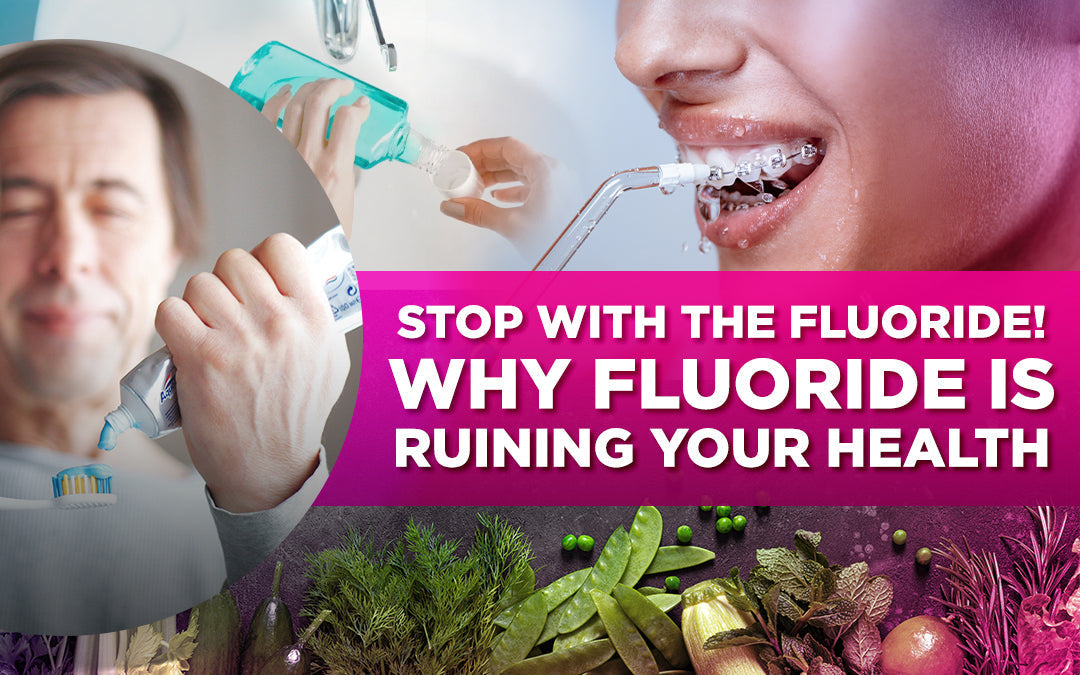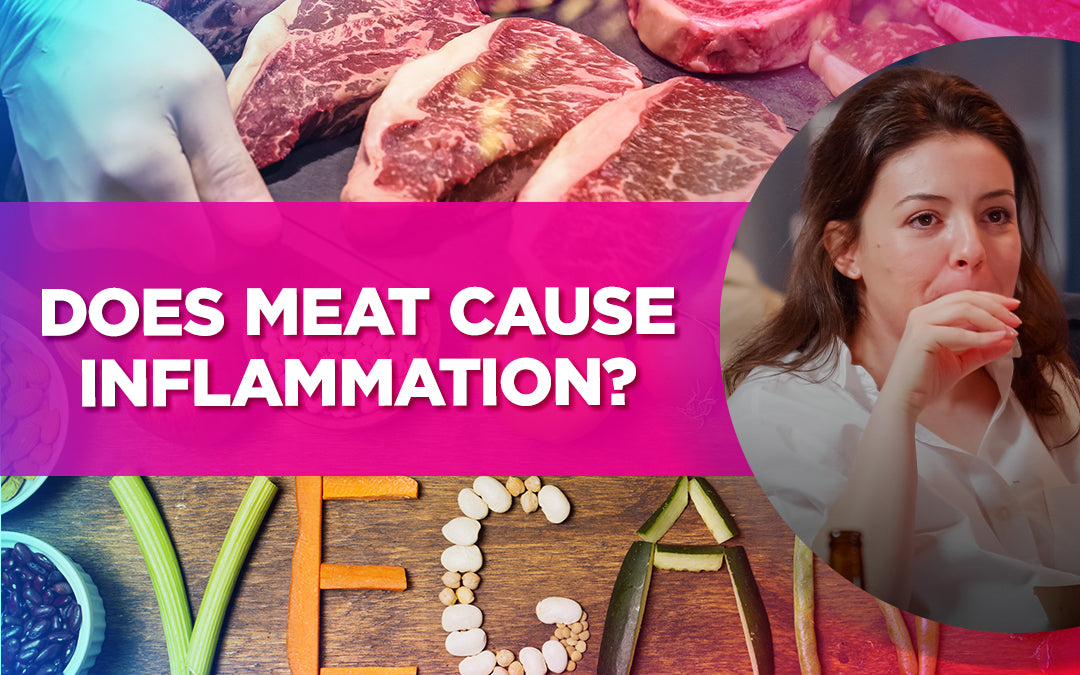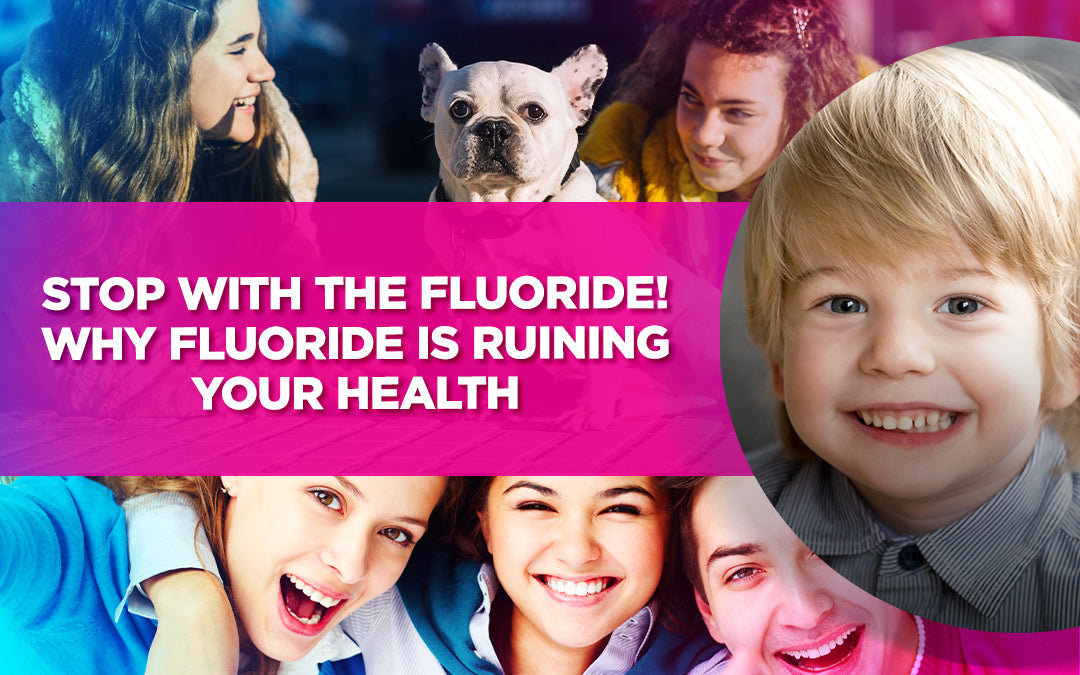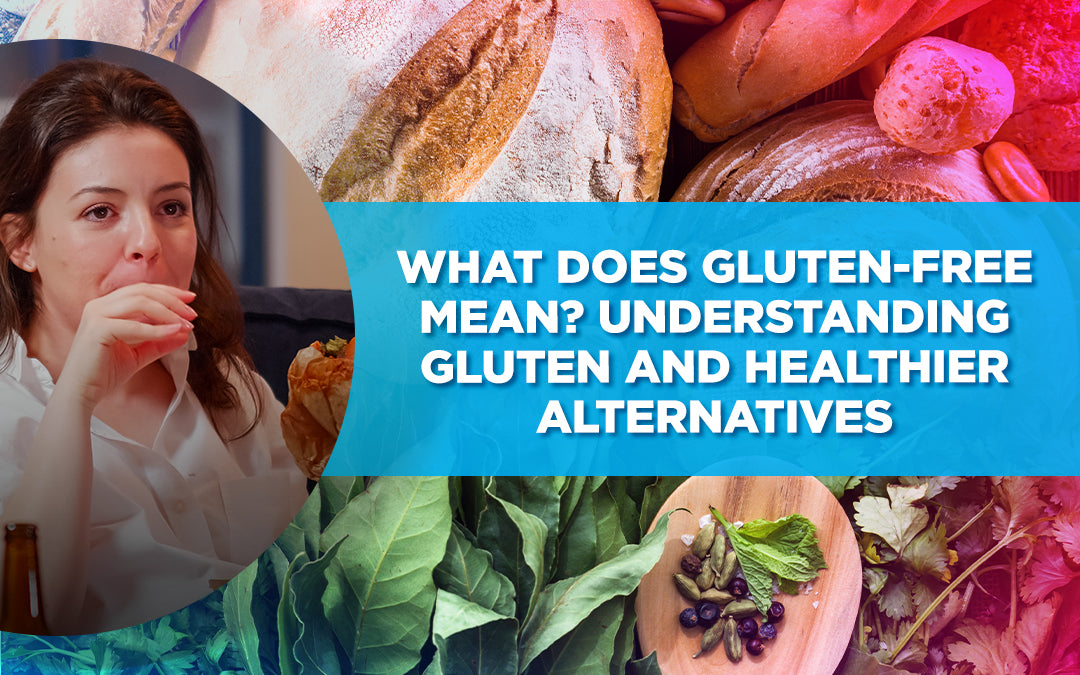STOP with the FLUORIDE! Why Fluoride is RUINING Your Health
Dr LivingoodShare

Many people believe that fluoride is good for our teeth, but is this true? You may be using fluoride in your toothpaste, but it might also be in your tap water!
Excess amounts of fluoride in our system can cause a lot of health problems, and even cause decreased mental development in children.
In this blog, I will be answering whether fluoride is safe, what too much fluoride in the system can cause, and alternatives to using it.
Many people believe that their teeth’s enamel is weak because they’re not getting enough fluoride in their diet, but that’s not true.
What could actually be causing this is a lot of other issues like bacteria, cleanliness, how often you brush, what you’re eating, and, believe it or not, too much fluoride.
Symptoms of Excess Fluoride
The main reason we use fluoride is to get more minerals and enamel for our teeth’s health, because the enamel layer on the outside of the tooth can decay from the food we eat and from improper cleaning.
A lack of fluoride isn’t what causes enamel loss. Fluoride is just a sort of drug treatment to make up for the loss of enamel, and we can get too much of it.
In adults, too much fluoride exposure can lead to joint stiffness, numbness, tingling, weakness, and kidney dysfunction.
It can also lead to indigestion, low immunity, and an increase in gluten intolerance.
If you’re experiencing any of these symptoms, it could be because you have too much fluoride in your system.
Children can experience something called fluorosis, which is when there’s too much fluoride in the teeth, and they become discolored. This can happen from as little as exceeding a 1 milligram-per-liter amount per day.
Studies have even found that if children take in 2 milligrams per liter, there starts to be a decrease in mental development.
How Much Fluoride Is In Our Toothpaste & Water?
American tap water has 0.2 milligram of fluoride per liter on average. However, there are areas in the U.S. that have as much as 4 milligrams of fluoride per liter.
The easiest way to prevent taking in excess fluoride is by filtering your water.
Toothpaste and mouthwash typically contain 1.2 milligrams of fluoride per liter in fluoride-based toothpastes.
My children tend to swallow toothpaste by accident, so this amount of fluoride could become a problem.
Luckily, my family doesn’t use fluoride-based toothpaste, so it’s not a problem.
85% of known fluoride toxicity cases are due to toothpaste or mouthwash, so imagine what could happen when you add the amount in your tap water to that.
How To Reduce Fluoride Levels

So what can we do to prevent taking in too much fluoride?
Increase Calcium Intake
You can increase your calcium intake by eating green leafy vegetables and increasing the amount of organic dairy that you’re drinking.
You can also supplement with calcium, but be careful not to take too much.
Calcium has been known to block the uptake of fluoride and decrease its amounts in our system.
Alkaline Foods
Alkaline foods consist of fruits, veggies, green juicing, vegetable juicing, and greens powders.
Alkaline foods diffuse and remove fluoride from the body.
Filtered Water
One method of filtering water is called surface area filtration, which I prefer over any other type.
Surface area filtration passes the water through a medium that gets the fluoride out of it, providing clean water.
I have another blog that covers the quality of water and the benefits of surface area filtration that you can check out here.
Decrease Acidity
Acidity caused by consuming too much sugar and too many carbohydrates and acidic processed foods is what drives a lot of tooth problems.
Try to increase alkalinity and decrease acidity by changing your diet.
Use Fluoride-Free Toothpaste
Hydroxyapatite is a supplement that is used in certain types of toothpaste. Research shows that it helps restore minerals to teeth and helps protect their enamel.
It’s also non-toxic because it’s made from inorganic sources.
Hydroxyapatite is a great alternative to fluoride that provides the benefits of fluoride without the toxicity.
If you want to look at some of the toothpaste brands I use, you can check out this Amazon link to find some hydroxyapatite toothpastes.
Bacteria & Cleaning Methods
Bacteria can build up in the mouth between teeth and food can get stuck. To fix this, using a water flosser. These shoot high pressure water in between your teeth and are a great alternative to more traditional flossing.
I also like to use hydrogen peroxide a couple of times a week to kill any bad bacteria in my mouth. Try not to overdo it with fluoride-based mouthwashes, because they’ll kill off good bacteria as well.
Oil pulling is another effective way to remove bacteria in between the teeth. Oil pulling involves using coconut oil and pulling it between the teeth back and forth.
If you want to know exactly what my routine is for good oral health, I have a video that covers it here.
Share
Related Articles
Most Popular
-
The 5 Amazing Benefits of Omega-3s
August 13, 2024 -
Healing Your ‘Second Brain’: The Path to a Healthier Gut
August 13, 2024







